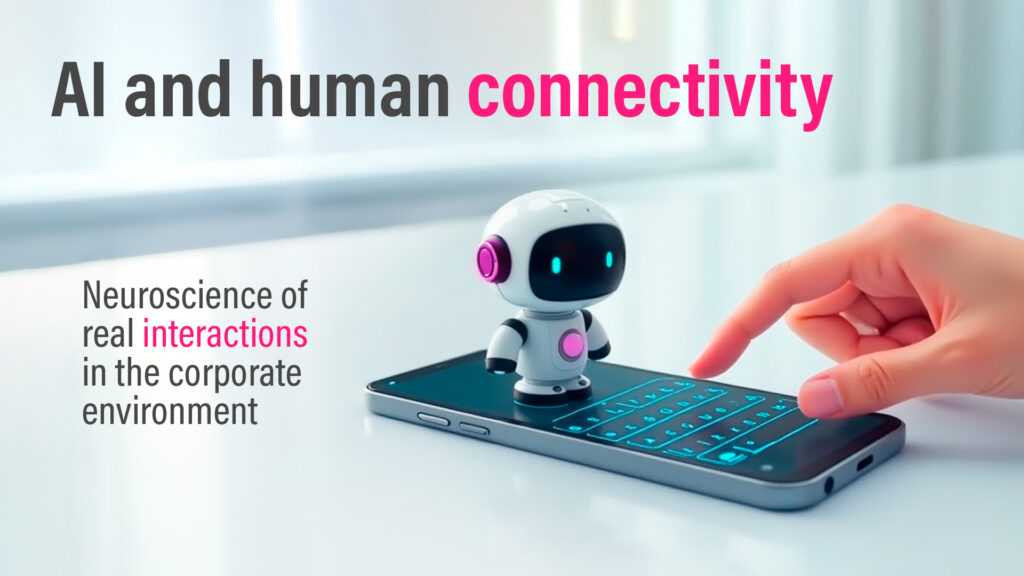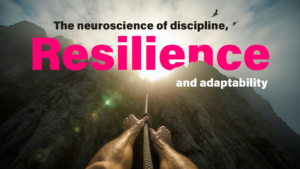
AI and Human Connectivity: Toward a Neuroscience of Real Interactions in the Corporate Environment
In today’s rapidly evolving business landscape, where artificial intelligence (AI) is redefining productivity and reshaping workplace dynamics, a critical question emerges: How can organizations preserve the human element in an era of automation? Surprisingly, the answer may lie in the core of the human brain—or more precisely, in how our brains connect during real-time interactions.
Organizational neuroscience, a field historically focused on individual cognitive processes, is now being transformed by an emerging paradigm: second-person neuroscience. This approach doesn’t merely observe individuals in isolation but studies how people’s brains align during actual social interactions. The implications for leadership, teamwork, and especially AI integration in the workplace are groundbreaking.
From Individual to Relational Intelligence
Most prior research in organizational neuroscience has relied on laboratory setups that isolate individuals. Yet in the world of business, decisions and strategies are seldom made alone. It is the dynamic exchanges—between leaders and teams, salespeople and clients—that drive organizational performance.
The article “Bringing social interaction at the core of organizational neuroscience” (Boukarras et al., 2022) argues for a paradigm shift: using ecological methodologies like hyperscanning to study how multiple brains interact simultaneously during real-life social situations. These tools enable the exploration of phenomena such as leadership dynamics, emotional contagion, and team cohesion from a deeply interpersonal and physiological standpoint.
Brain Synchrony and Effective Leadership
One key concept emerging from this line of research is neural synchrony. When people are genuinely connected—such as a leader and their team—their brain activity patterns tend to align. This alignment has been linked to greater cooperation, mutual understanding, and improved decision-making.
Studies like “Emotion contagion in leadership: Followercentric approach” (Snaebjornsson & Vaiciukynaite, 2016) and “Benefits of leaders’ pleasurable recovery activities on follower performance via emotional contagion” (Kim et al., 2023) show how emotional contagion—the nonverbal transmission of emotional states—significantly impacts team performance and engagement. Leaders who emotionally resonate with their teams don’t just inspire more—they literally “tune in” to their people.
Where Does AI Fit In?
As AI tools proliferate across business processes—from conversational agents to HR analytics—tensions arise between algorithmic efficiency and human connection. But what if, instead of replacing interaction, AI could enhance it?
In “Social Neuro AI: Social Interaction as the ‘Dark Matter’ of AI” (Bolotta & Dumas, 2021), the authors propose that AI can be made more effective by modeling it on the brain’s social capabilities. Embedding insights from neural synchrony and emotional dynamics into AI design could yield more collaborative, empathetic tools.
Practically speaking, this would mean virtual agents capable of detecting users’ emotional states, AI platforms that facilitate rather than disrupt team dynamics, and performance metrics grounded in real interaction patterns rather than isolated KPIs.
Virtual Reality and Neuro-Organizational Assessment
The practical applications of these insights are already emerging. Technologies such as virtual reality (VR) now enable the simulation of realistic workplace environments for behavioral assessment. In “Combining Virtual Reality and Organizational Neuroscience for Leadership Assessment” (Parra et al., 2021), researchers used immersive environments and eye-tracking to objectively assess leadership skills in realistic settings.
This paves the way for a new approach to talent management—one that selects and develops leaders based not just on performance outcomes, but on their capacity to generate synchrony and emotional resonance within their teams.
A New Frontier in Organizational Neuroscience
Merging social neuroscience with AI represents a strategic opportunity for the future of work. It’s not about replacing human intelligence with machines—it’s about extending our understanding of how meaningful connections are built.
The organizations that thrive in the future will be those capable of aligning emotional intelligence, brain science, and technology to foster more humane, collaborative, and high-performing cultures.
By placing human interaction at the center of organizational design—and using technology as a bridge, not a barrier—we’re witnessing a quiet but powerful revolution: the reinvention of business from the synapse outward.
References
- Bringing social interaction at the core of organizational neuroscience (Boukarras et al., 2022)
- Emotion contagion in leadership: Followercentric approach (Snaebjornsson & Vaiciukynaite, 2016)
- Benefits of leaders’ pleasurable recovery activities on follower performance via emotional contagion (Kim et al., 2023)
- Social Neuro AI: Social Interaction as the ‘Dark Matter’ of AI (Bolotta & Dumas, 2021)
- Combining Virtual Reality and Organizational Neuroscience for Leadership Assessment (Parra et al., 2021)
Continue reading more articles: https://neurobusiness.us/blog/


